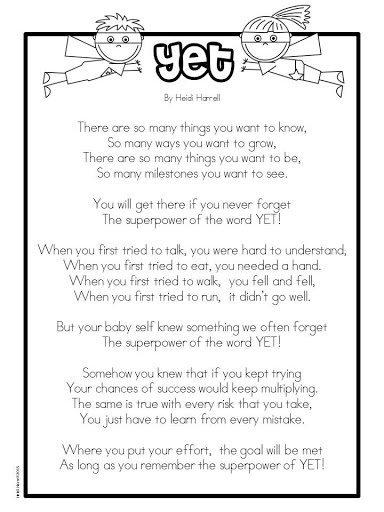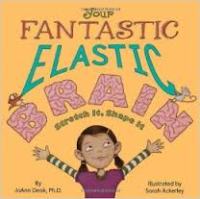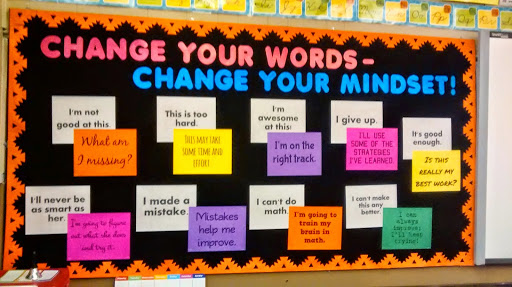What if we developed the American Ninja Warrior Growth Mindset in all of our students?
“I gave it my all, but it didn’t work out this time. I’ll keep training all year and I’ll be back,” said one of the American Ninja Warriors who fell an obstacle short to make it to the next stage in the Finals in season 2015.
“Well, that certainly sure sounds like a growth mindset to me.” I stated.
My son Liam (age 7), turns to me and says…”Yeah, I think almost all of the American Ninja Warriors have a growth mindset, right? Well, everyone except for Flip. Flip was upset and said he was going to quit and not do it again.”
Me: “It’s okay to be upset when something doesn’t work out, but what you do next is what matters more.”
 Now, I have to admit that I only half-watch these episodes. However, my sons are enthralled by the show, because the time and dedication these athletes put in all year to then tackle these obstacles really does take your breath away.
Now, I have to admit that I only half-watch these episodes. However, my sons are enthralled by the show, because the time and dedication these athletes put in all year to then tackle these obstacles really does take your breath away.
At times, I even have my own American Ninja Warriors in my midst at home climbing the walls and conquering any obstacles they come in contact with.
It is actually pretty amazing how they do not have that fixed mindset of the fear of failure that can paralyze some people into not trying new things or taking risks….at least when it comes to climbing obstacles.
Thank you to American Ninja Warrior for illustrating the idea of growth mindset for my boys. Thank you to Kacy Catanzaro for showing my boys that some obstacles need time to overcome.
Now, the growth mindset does not always transfer as easily for the boys when it comes to other areas. For example, one of my boys knows that he has to work on improving his spelling and writing. How can I train him to have an American Ninja Warrior Growth Mindset in spelling?
“I’m just not good at spelling,” he begins to say. “It’s not like I’m like (insert other student name here) and ate a whole dictionary that I know all these words and how to spell them.”
I pause and smile with a funny image of his friend eating a whole dictionary, then try to figure out the right response….a growth mindset response.
Insert Opportunity Here….
What would you say if your child or student stated that they were not good at a skill, whether it is math, writing, reading, or in this case spelling?
Well, before I share my response, let’s hear about what educators in the Mendon-Upton Regional School District are doing to foster the growth mindset in the first two weeks of school.
Example 1:
Yesterday, in a world language classroom the students came in and some refused to share their homework with their teacher because they didn’t feel like it was good enough to share. The teacher used this as an opportunity to teach the students about having a growth mindset and the importance of taking risks. No risks=no rewards, right? They ultimately shared their homework then looked to see how they could make improvements.
Example 2:
One of the students in that same classroom still didn’t want to share the example with the class. What did the teacher do? Bring the student to check out the following growth mindset display that a different teacher in the building had posted.
Example 3:
In another building, and with some inspiration from Pinterest—a whole group of teachers, staff members, and the principal created the following board at the elementary level. Pretty powerful right? It does really start with changing our words.
Example 4:
After returning from visiting the elementary school, I read an e-mail that went out to the whole middle school staff with the following suggestion for their school. Coincidence…maybe? I look at it as more like synchronicity. The more we promote a growth mindset, the more growth we see in students….it just makes sense.
Example 5:
I enter a different elementary hallway and see these adorable posters and on the wall and on the lockers about training your brain. Then inside the classrooms I see the a visual supporting how to change your mindset.
So what will be the impact of all this? Will it help our students? Will it help us as educators?
Example 6:
A class has just finished reading a book called The Fantastic Elastic Brain. I walk in and the teacher asks the students if they can explain what they just read and learned. The students raise their hands and then one boy, with the cutest little voice, explains to us that our brain is made up of a lot of parts that do all kinds of different things and it’s connected by…..and as he can’t remember the exact word, another student helps and eagerly shouts out “Neurons! You see, when we learn we are making connections in our brain.” If you could have been there to see the sparkles in the eyes of the students as they discussed how they can change their brain…that their brain is in fact “fantastic” and “elastic.”
Example 7:
Even as I was in the process of writing this blog today, I received a request from one of our counselors asking for some resources being used in classrooms to also be used to help use in small groups with students who may have lower self-esteem because of their own fixed mindset. She recommended that maybe running a growth mindset group could help.
I’m so impressed by how quickly staff members are diving into promoting growth mindset in their schools and in the classrooms. If you are looking for new ideas in this area, please check out my pinterest page on
Growth MindsetSo how did I answer my son when he said “I’m not a good speller”?
I quickly responded “FIXED MINDSET,” which is what we are starting to do when we catch ourselves using a fixed mindset. His response…”Yeah, you’re right.”
Me: “It just takes practice, buddy. Let’s go work on that and see how we can get better.”
Pretty soon he will be an American Ninja Warrior Speller.
 In a previous post I wrote about my boys and how we are trying to identify a fixed mindset when we see it and work towards building a growth mindset. As part of that process, we have begun to explore the “Power of Yet.” A three letter word….but it can be so powerful.
In a previous post I wrote about my boys and how we are trying to identify a fixed mindset when we see it and work towards building a growth mindset. As part of that process, we have begun to explore the “Power of Yet.” A three letter word….but it can be so powerful.
 We used that moment as a learning opportunity about the “Power of Yet” just like you can do with your students every day within your classrooms. We talked about other areas where it took time to learn skills such as tying his shoe, riding a bicycle, hitting a baseball, or learning to read, but eventually with practice, he was able to learn how to do all of those things and more.
We used that moment as a learning opportunity about the “Power of Yet” just like you can do with your students every day within your classrooms. We talked about other areas where it took time to learn skills such as tying his shoe, riding a bicycle, hitting a baseball, or learning to read, but eventually with practice, he was able to learn how to do all of those things and more.






















